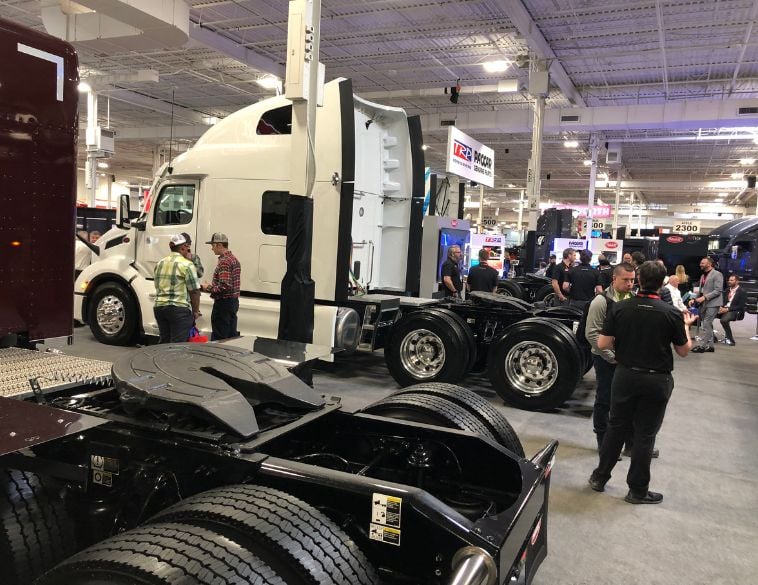Lower maintenance costs make EVs appealing to fleets.
Last year, only 3.3 percent of light duty vehicle sales in Canada were electric, but that’s enough for Al Cormier to see larger implications.
“In addition to activity in light duty vehicles, we’re now into electric transit buses, electric school buses, and electric trucks of various sizes,” says Cormier, the director of special projects at Electric Mobility Canada. “Several OEMs are coming up with electric pick-ups in the coming year, as well as companies like Rivian and Tesla.”
EVs are an attractive fleet option because they don’t require as much maintenance as a vehicle powered by an internal combustion engine. “It’s the nature of the electrification, there are a lot fewer moving parts and no oil changes,” says Cormier. “Therefore, a lot less maintenance and service.”
“The price of batteries has been a major consideration, but the price has gone down drastically,” says Cormier. “It used to be $1,000/kw, now it’s down to about $200/kw, and experts say it will be within $100/kw within a year.” He believes electric vehicles will have price parity with internal combustion engine vehicles within about five years.
Competitive battery industry
When fleet managers buy a vehicle, they naturally look at what it’s going to cost them over the life of the vehicle. “If they do this analysis, comparing the increased purchase cost versus the much reduced cost to energize the vehicle, they will see a significant advantage each year and over the life of the vehicle,” says Cormier.
Although there’s been speculation that battery replacement could be expensive, that doesn’t appear to be happening. “We’ve had EVs around for 10 years or more, and they’re still working fine with their original battery,” says Cormier. “That’s disappearing as a concern. The battery industry is highly competitive for performance and quality, they keep improving battery density and power.”
Although consumers want vehicles with greater range, fleets typically operate vehicles that come home every night. They may drive 100 kilometres or less a day, which is well within the range of a modest sized battery pack. “If they come home overnight, it would be easy to charge them when electricity is cheaper,” explains Cormier. “It doesn’t need to be rapid charging, you can do the level two charging, 220 volt. The bulk of the rapid charging with higher voltage and faster charging is along the highway.”
The chargers themselves are just an electrical piece of equipment. “I’ve not heard of any of them breaking down,” says Cormier. “Their price is also coming down rapidly, as the number of companies providing chargers is increasing.”
To anyone who’s worried about the impact on the grid, Cormier notes that in the last few decades, households have switched from clotheslines to electric dryers, which have the same power as a battery charger – and utilities have survived. “We’ve also gone from very hot homes to air conditioned homes, and we’ve survived that.”
ZEV legislation
Currently, the types of fleets switching to electric vehicles are a mix, except in provinces with some form of Zero Emission Vehicle (ZEV) legislation such as Quebec and British Columbia. “Where ZEV legislation exists, government and service fleets are making the switch,” says David Murphy, senior manager fleet, Mitsubishi Motor Sales of Canada, Inc. “It depends on several factors, including local usage and a fleet’s desire to reduce greenhouse gas, reduce total cost of ownership, and reduce maintenance and gasoline costs.”
When it comes to fleet management software, EVs and plug-in hybrids (PHEV) will blend into existing fleet management software. “Drivers will likely need refresher training on how to maximize range, such as no rabbit starts, no last second braking when coming to a controlled stop,” says Murphy. “Other learning that will be helpful includes understanding how regenerative breaking works, and of course, how and where to recharge the vehicle.”
There are cost savings to be had on fuel and maintenance, if not on the actual price of the vehicles. “However, when you look at the total cost of ownership over the life of the vehicle, EVs and PHEVs are often the better option,” says Murphy.
Fuel savings start on day one and will continue for the life of the vehicle. “EVs have 90 percent fewer moving parts than ICE vehicles,” says Murphy. “That means 90 percent fewer parts requiring maintenance. EVs have no oil or other fluids that need to be replaced on a regular basis. Wear and tear on brakes are also drastically lowered due to the regenerative braking systems.”
Managed charging
But there could be hidden costs when it comes to managing electricity. That’s where it is helpful to consult with the local utility. “It depends on how many cars are charging, what kind of rate structure you’re on,” explains Neetika Sathe, vice president, GRE&T centre, at Alectra. “If you are a Class A or Class B customer, if all the cars at the fleet depot are going to be put on charging at the same time, the power draw is going to be pretty high.”
There are ways of managing charging through technology, to avoid the peak times. “You only need to charge the car for only three, four or five hours,” says Sathe. “You don’t need to charge for 12 hours. So you can have managed charging, where not all the cars are charging at the same time – you can stagger it.”
“It needs a little bit more partnering,” says Sathe. “All these new energy solutions are new economic solutions.”
Making the switch to EVs comes with long term cost savings, when factoring in reduced fuel usage and maintenance. “Battery electric vehicles have far fewer parts than combustion engines – no spark plugs, pistons, timing belt or oil requirements,” says Charlotte Argue, fleet electrification senior manager at Geotab.
Battery health
The greatest cause for concern is the EV’s battery health. “It’s important as it impacts the maximum usable range and the vehicle’s residual value,” says Argue. “To date, batteries have proven to perform well, with only slight degradation.” There are ways to extend the life of the battery, such as minimizing fast charge events, especially on hot days, and having the battery below 80 percent if the vehicle is sitting for a long period of time.
Fleet managers may want to monitor EV usage to ensure they’re getting the most out of the vehicle’s available range. “An EV will bring more value the more it is driven,” says Argue. “Fleet owners need to ensure that their drivers are trained to plug in their vehicles at the end of the day to help optimize range.”
“Taking advantage of an EV’s full potential will result in successful EV integration in fleets.”



